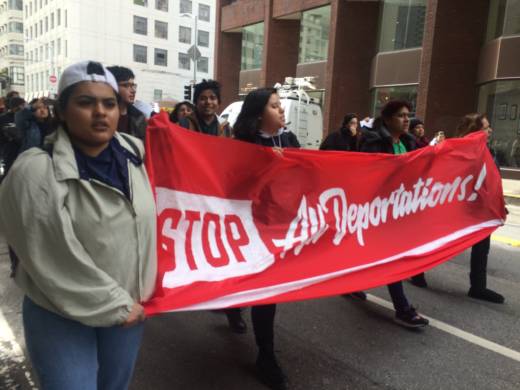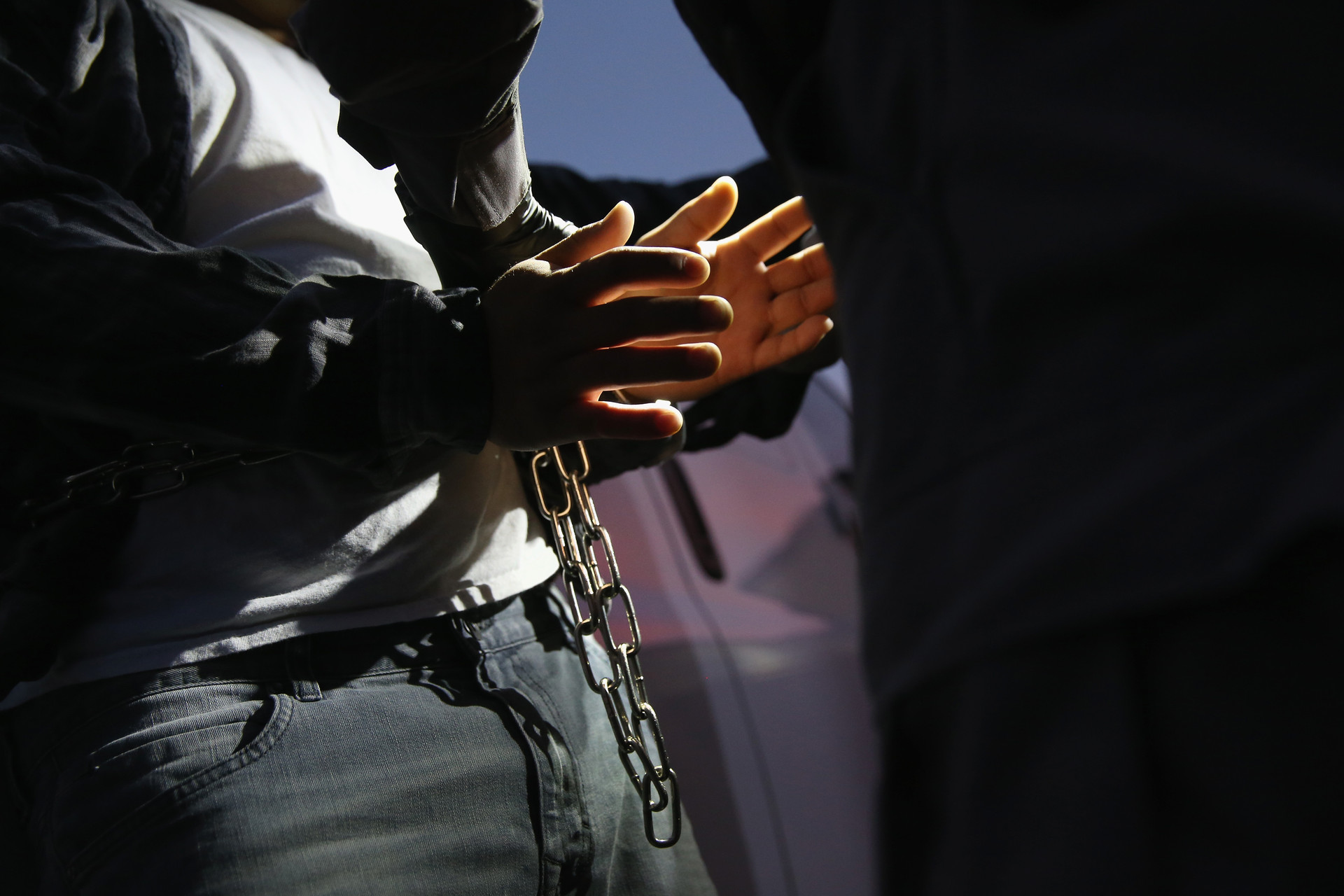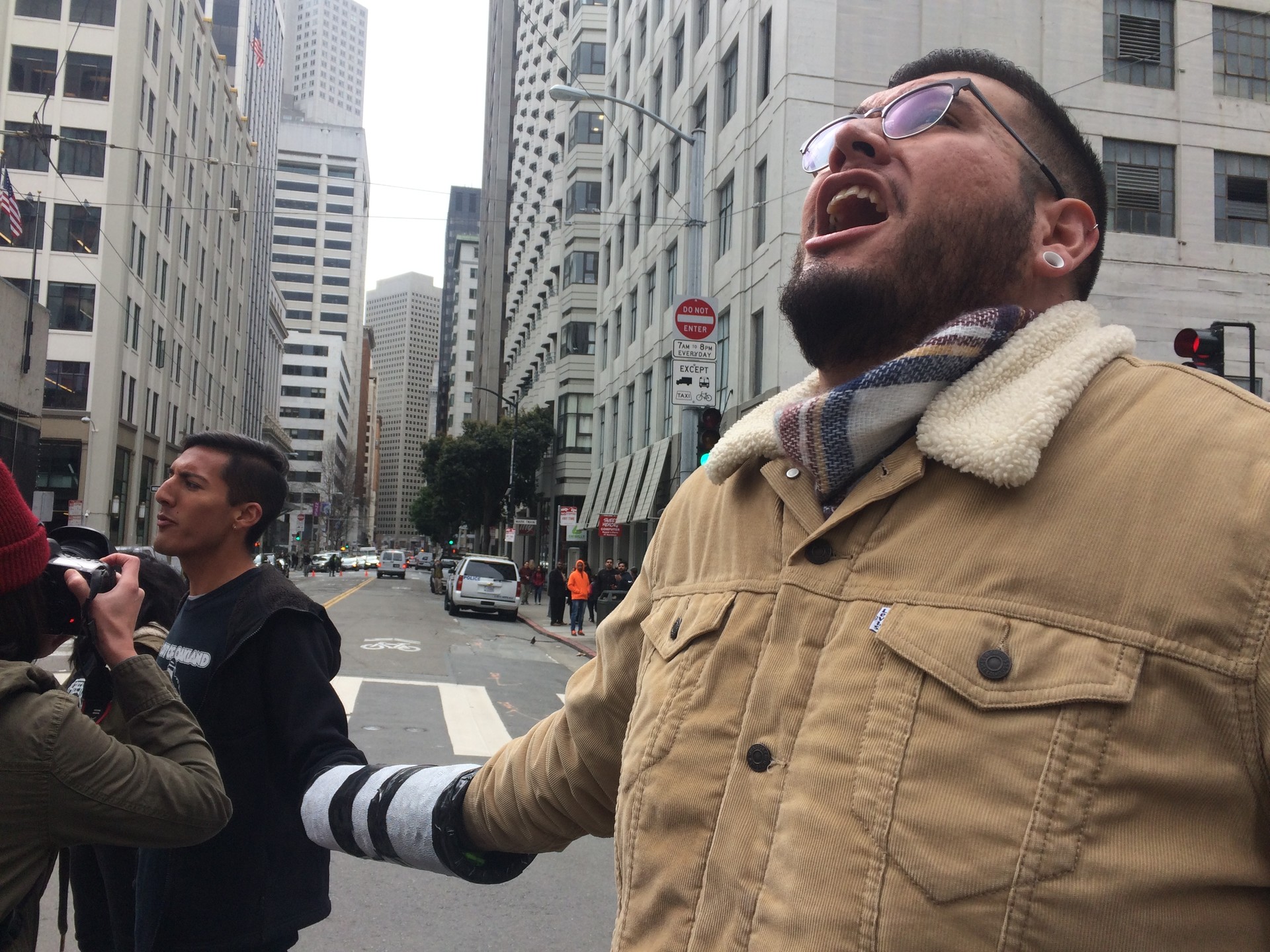The Trump administration broadened the scope greatly in a Jan. 25, 2017, executive order to include people who had been previously removed from the United States, or who an immigration judge had ordered removed, among others.
After arresting someone, ICE agents take them to a field office for booking. According to Bonnar, ICE informs all detainees of their legal right to an attorney, provides a list of legal service providers and allows free phone calls to seek legal help.
If a person has been previously detained by ICE, agents must review their case file to determine whether to keep them in custody.
"In some cases we don't," Bonnar said. "Before they go see a judge we can put them on an order of supervision or recognizance. We can set a bond if we don't find them to be a high threat to the community."
Bonnar declined to discuss the criteria that ICE uses to make that determination, but he said they had not changed under President Trump.
Detained Pending Removal
However, data show that people in deportation proceedings were far more likely to be detained over the past year.
The proportion of those detained during court proceedings tripled from 18 percent in January 2017 to over 63 percent in December, according to immigration court data collected by the Transactional Records Access Clearinghouse at Syracuse University. That's the highest rate since the beginning of the data set in late 2000.
Immigration attorneys, as well as an immigration judge in San Francisco, have noticed the increase and attribute it to a Trump administration priority for limiting what the president and others call “catch and release,” for immigrants in deportation proceedings.
“What’s driving their policy decisions is this sort of misconception that we’re releasing people and having them pay bond and then they’re sort of absconding and then going into the interior of the United States,” UC Davis immigration law professor Holly Cooper said.
Research from TRAC published in September 2016 found that about 23 percent of people released on bond at intake -- that is, by an ICE or Customs and Border Protection official -- failed to appear for a subsequent deportation hearing. A smaller proportion -- 14 percent -- failed to appear after a judge granted release later in the process.
Dana Marks, an immigration judge in San Francisco who spoke in her role as president emeritus of the National Association of Immigration Judges, said she has seen a rise over the past year in cases in which the people facing deportation are locked up. And it's contributing to a nearly 700,000-and-growing national case backlog.
That’s because some of the people detained can petition a judge to overturn ICE’s initial determination and release them with no bond or lower the amount. And because they involve people who are in detention, those “bond redetermination” hearings are prioritized over other cases.
“There’s nothing wrong with a particular administration deciding what their priorities should be, but we object to putting the cart before the horse, as it were,” Marks said. “Don’t start holding these people in huge numbers in detained settings until you have the judge docketing potential by hiring more immigration judges to be able to handle those cases in a reasonable time frame.”
The U.S. Supreme Court ruled on Feb. 27 that detained immigrants can be held indefinitely, overturning a California-region appellate ruling that people in detention should get a custody hearing every six months. The ruling could clear many of those hearings from the court dockets, but it means many more people can be locked up for longer.
“The American public doesn’t want to be paying the detention costs,” Marks said. “There’s a lot of hardship for [detainees], and most people being detained now do not have criminal records or do not have serious criminal records, because of the shift that is occurring.”
Complex System
What will happen in the case of Cristian and other immigrants arrested by ICE involves many different factors. Some people could be deported within hours. Others will be scheduled for a hearing in immigration court that could be several years down the road.
Generally, those subject to fast-tracked deportation without a hearing are limited to three categories:
- Expedited Removal: People who have been in the United States up to 14 days and who are apprehended within 100 miles of the border (expanded to include the coasts and the U.S.-Canadian border in 2006).
- Reinstatement of Removal: People who have been previously deported.
- Voluntary Departure: People who agree to relinquish their right to a hearing. This doesn’t necessarily mean an immediate departure, but it often does for Mexicans caught at the border.
But those subject to immediate deportation may be allowed to stay in the U.S., if they can prove they have a well-founded fear of persecution (based on religion, politics or other factors) if they return to their home country. That's called an asylum claim.
“When you tell the apprehending border patrol agent or ICE officer ‘I’m afraid to go back,’ it should trigger a special process for you,” said Cooper, the UC Davis law professor. “In that process, you are supposed to be permitted to have an interview with an asylum officer who can assess whether you have a credible fear in your home country. … If you pass that, then you go in front of a judge.”
Most of those apprehended, including Cristian, are not subject to fast-track deportation. They are entitled to a hearing that will probe whether the person should be deported or granted some form of immigration relief.
In addition to asylum, people can be granted relief for humanitarian reasons -- if their deportation would create extreme hardship for a U.S. citizen or permanent resident, said Marks, the immigration judge.
Deportations can take years to be carried out, largely due to a backlog in the courts. Marks said some courts have scheduled, through 2022 or beyond, hearings on the merits of immigration cases.
’Self-Deportation’
Advocates say that if people are released while awaiting their hearing, they have a much better chance at winning their case.
And prolonged detention can coerce them into voluntarily leaving the country.
Maricela Gutiérrez is the executive director of SIREN, an immigrant advocacy organization based in San Jose. She recalled the case of a man arrested in San Jose in February 2016.
He was transferred to a detention center in Texas, Gutiérrez said, before SIREN was able to link him with an attorney.
“The entire time they were telling him if he would be willing to just self-deport,” she said, “and he really was trying to fight his case."
“Time just kept eating away at him and he couldn’t stand being in detention very much longer. It was just really affecting him and he was experiencing a lot of anxiety and stress, and in the end he self-deported to Mexico,” she said.
Release Pending Removal
Centro Legal de la Raza helped Cristian's family navigate paying his bond. They weren't able to do it Wednesday because protests shut down the ICE processing center at 630 Sansome St., but they posted the bond on Thursday, Knox said.
By that time, though, Cristian had been transferred 400 miles south to a private detention facility in Adelanto, in San Bernardino County. He was released Thursday evening and made it home to Oakland on Friday. But he’ll still have a notice to appear in court for deportation proceedings.
It’s unclear at this point how Cristian will fight his case, but he could seek help from Centro Legal de la Raza's free legal clinics.
He said he's a hard worker who is studying to be an electronics technician and volunteers with an Oakland youth organization.



